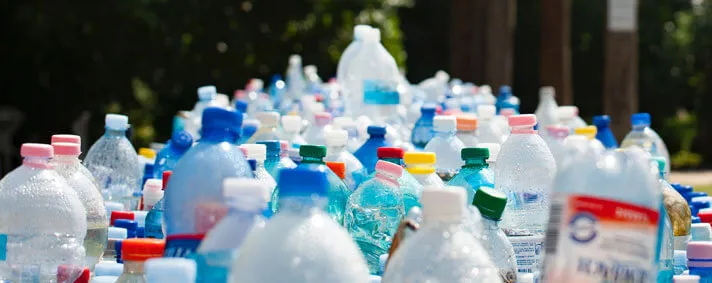PET Recycling and a label

Table of contents
In our desire to preserve the planet, and in regards to educating people about how important recycling is, we have designed a label to instruct people how to deal with PET packaging(food, beverage, and other liquid containers). It is the graphic description of an easy-to-use four step method of recycling. And, to further the ends of public awareness, we are providing a downloadable version of it for you, to encourage the employees and guests in your office to make the responsible decision to recycle.
Enlightening the general public to the benefits of recycling is a noble cause, so in addition to the label, we are also including a short piece written to illuminate the steps and clarify the importance of recycling and reusing.
FOUR EASY STEPS TO RECYCLING
STEP ONE: THE PLASTIC BOTTLE
PET or PETE (polyethylene terephthalate) plastics are considered CATEGORY 1plastics, and recyclable. There are seven categories of plastic, but PET plastic is the most commonly used in the production of single-use bottled beverages. It is lightweight and easy to recycle. The percentage of recycled PET plastic is around 20%, and rising, as the habit of recycling has become a global phenomenon.
PET plastic is commonly found in soft drink, water, and beer bottles, as well as mouthwash bottles, salad dressing and vegetable oil bottles, and heat-resistant food trays.
Most PET plastic is picked up through local curbside recycling programs. And while occasionally it is refracted as another plastic bottle, it is more often reused in polar fleece, tote bags and straps, furniture, carpeting, and the like.
STEP TWO: THE CAP
Remove the cap(discard the bottle and the cap together, as they will be separated later at the recycling facility). The cap used on most PET bottles is made from CATEGORY 5plastic, and is recycled using a different method than CATEGORY 1. It can be reused in brooms, battery cables, and of course, bottle caps.
Why separate them?Leaving the cap on the bottle might prevent the bottle from being flattened or properly crushed. More space becomes necessary in their transportation, and without proper circulation, the plastics, when exposed to the sun, might release chemicals that are harmful to the environment. These possibilities can be prevented by just removing the cap when you discard the bottle.
STEP THREE: THE PACKAGE
Crumple or flatten the package.It takes up less space in the bin, and less space during transportation, making it both an economically and ecologically sound decision. Not to mention the physical and psychologically therapuetic side-values of crushing plastic!
STEP FOUR: THE DISCARD
Throw your PET plastic bottle or tray into a PET designated bin, or biodegradable plastic bag. Biodegradable bags save you the time of having to transfer the plastics to a proper resepticle, and they're biodegradable, which is perfect.


